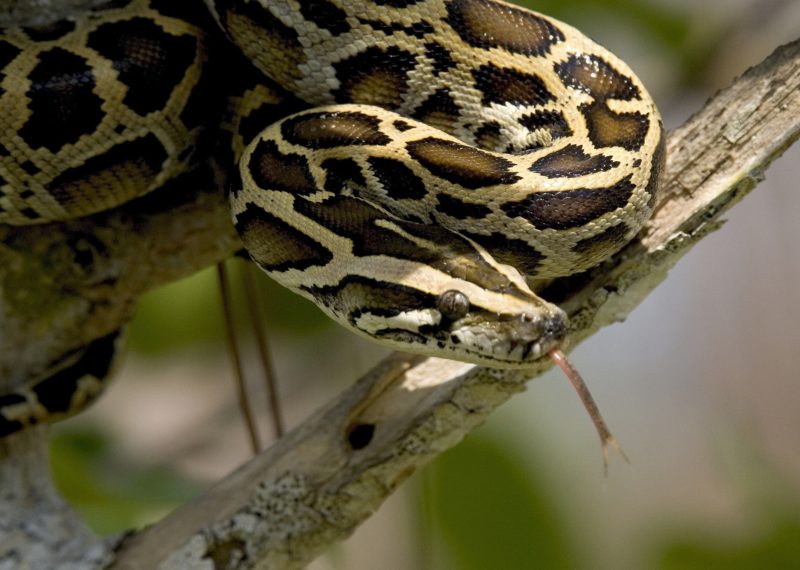Doria Gordon is an expert on ecosystems and the impacts they face in a warming world. In her role with the Ecosystems program at the Environmental Defense Fund, she studies the scientific and technical evidence for ecosystem resilience, based on experience in restoration, fire ecology and invasive species risk assessment. Below, she responds to our questions about evolving ecosystems in a time of increasingly rapid climate change.
Ecosystems are continuously changing as a result of outside influences — how does a warming climate differ from other environmental stresses?
Ecosystems are naturally dynamic over space and time. Both natural and human-caused stresses change both species numbers and the broader environment. Climate change is spatially similar to other stresses that have altered global conditions, but is occurring over a shorter timeframe than most — especially those of natural origin. Most of the climate shifts the world has experienced, even those that have caused mass extinction events, have occurred over tens of thousands of years or more, allowing the natural systems to evolve and respond. Climate change is occurring over a matter of decades, which will limit the species that can easily adjust.
The example of DDT may present a better analog to the timing and scales of anthropogenic climate change than previous shifts in climate. This pesticide rapidly spread and impacted species at global scales. However, while DDT had rapid, dramatic impacts to reproduction in species like predatory birds, not all species were affected. Further, rapid human action has now allowed us to reverse many of those impacts.
However, all life survives within specific ranges of temperature and may be impacted by climate change. Species that respond to climate changes differently from one another will be increasingly out of sync, with cascading impacts on food availability, pollination, and other interactions — adding layers of stress onto already stressed systems.
Additionally, the impacts of carbon dioxide — even once we slow its release — cannot be reversed in the timeframes we have seen for many toxins. I see climate change as challenging species and systems that are already brittle, fundamentally reducing their ability to adapt to other stresses or the new and shifting conditions to which they are exposed.
There has been much talk about increasing fire frequency and intensity as a result of global warming. Is there evidence to support the connection? How are fire-influenced ecosystems evolving?
While it’s difficult to distinguish the influence of global climate change from natural climate variability at the regional scale (e.g., El Niño/La Niña cycles) to clearly attribute cause and effect, there’s a growing body of evidence that climate change is impacting wildfires through increasing temperatures and related drying of soils. We are already seeing increases in both frequency and area of fires in the western United States — researchers have documented wildfires burning at four times the expected frequency, consuming areas more than six times the size consumed since the 1980s. The duration of the wildfire season is also increasing because of longer drier, hotter periods.
Simultaneously, climate change may also be impacting other factors that increase the amount of fuel available to burn. We have seen outbreaks of forest pests and pathogens — like the mountain pine beetle, which has responded to a warmer climate by reproducing more quickly while showing a decrease in winter mortality. This has resulted in large areas of dead material and stressed trees that support huge fires. And, invasive grasses like cheatgrass may spread under increasingly dry conditions, providing a more connected fuel layer to carry fire.
Additionally, greater climate variability may lead to cascading events — severe droughts, ice storms, flooding, and higher intensity hurricane events cause forest stress over large areas that allow pest outbreaks followed by wildfires. We are already seeing these sequences unfold across many parts of the globe.
Invasive species are on the move as temperatures continue to rise — what new risks are emerging as those organisms travel? What are the species of greatest concern?
I am always wary of developing lists of the worst invasive species, since that designation changes with geography and over time. However, our global economy means that opportunities for species movement — purposeful and inadvertent — continue to grow. Species that are invasive have traits that increase their ability to establish and spread in new habitats. As a result, many are also likely to be able to respond more rapidly to changing climates than native species, increasing their distribution well beyond their current ranges.
We have already seen a number of insect and pathogen species, both native and non-native, expand their ranges in response to earlier spring snowmelt and milder winters.
This expansion includes human diseases like the Zika virus currently in the news, which is projected to expand with the range of the mosquito that carries it. However, pinpointing the actual areas at risk is difficult both because our climate models are generally insufficiently accurate at small scales and because of unanticipated interactions among species as ranges shift. What is clear is that we will continue to see novel combinations of species.
The ability of native species to shift with their environment will be restricted if highly aggressive invaders are also present. The apparent impact of Burmese pythons on small mammal populations in the Everglades, for example, means that there may not be enough marsh rabbits and other species to colonize new habitats. Preventing establishment of invaders should increase the capacity for adaptation in native systems by reducing this additional stress.
As waters rise and precipitation increases, coastlines are getting battered — but how are inland waterways and environments, such as the Everglades, being impacted?
The configuration, geology and other characteristics of environments will impact their susceptibility to climate change. In a place like Florida, not only will impacts of sea-level rise move inland to cause flooding in freshwater systems like the St. John’s River, but water will rise from below, through the porous limestone rock and sandy soil. Saltwater intrusion into freshwater systems and into their aquifers will impact species and water supply. Increased high rainfall events in the Everglades watershed will increase the flow of high nutrient water into Lake Okeechobee and out into south Florida estuaries. We have already seen the damaging red tides and economic impacts from those events.
Additionally, surface water temperature is closely coupled with air temperature. Increased temperatures can therefore impact temperature-dependent aquatic organisms (like salmon or sturgeon, whose spawning is triggered by cold water flows). Temperature can also influence water chemistry, with different impacts on different species. Overall, though, no system will be immune to climate change. Like other stresses, impacts will reverberate through food webs with ramifications for all species and human well-being.
What actions should nations be taking to best preserve ecosystems in this period of climatic change?
We need to act on both the climate mitigation and adaptation sides, addressing both the causes of climate change and making sure we can adjust to the climate change we’re already seeing.
To avoid the most severe impacts of climate change on both natural systems and people, we need to significantly slow the emission of greenhouse gases. In political terms, that means countries need to ratify the Paris Agreement and focus on achieving and improving on its ambitious goals.
Additionally, we need to ensure that natural systems can adapt to the changing conditions that are already upon us. That means that reducing as many of the other stresses present as possible. Traditional conservation actions of reducing habitat fragmentation through protection and restoration, removing harmful invasive species, restoring natural fire regimes, ensuring harvests are sustainable, and improving water quantity and quality are all critical if we are to provide our natural systems with the maximum flexibility to respond, move, and adapt to the changing climate.
This interview was conducted by Josh Chamot, who writes for Nexus Media, a syndicated newswire covering climate, energy, politics, art and culture.


